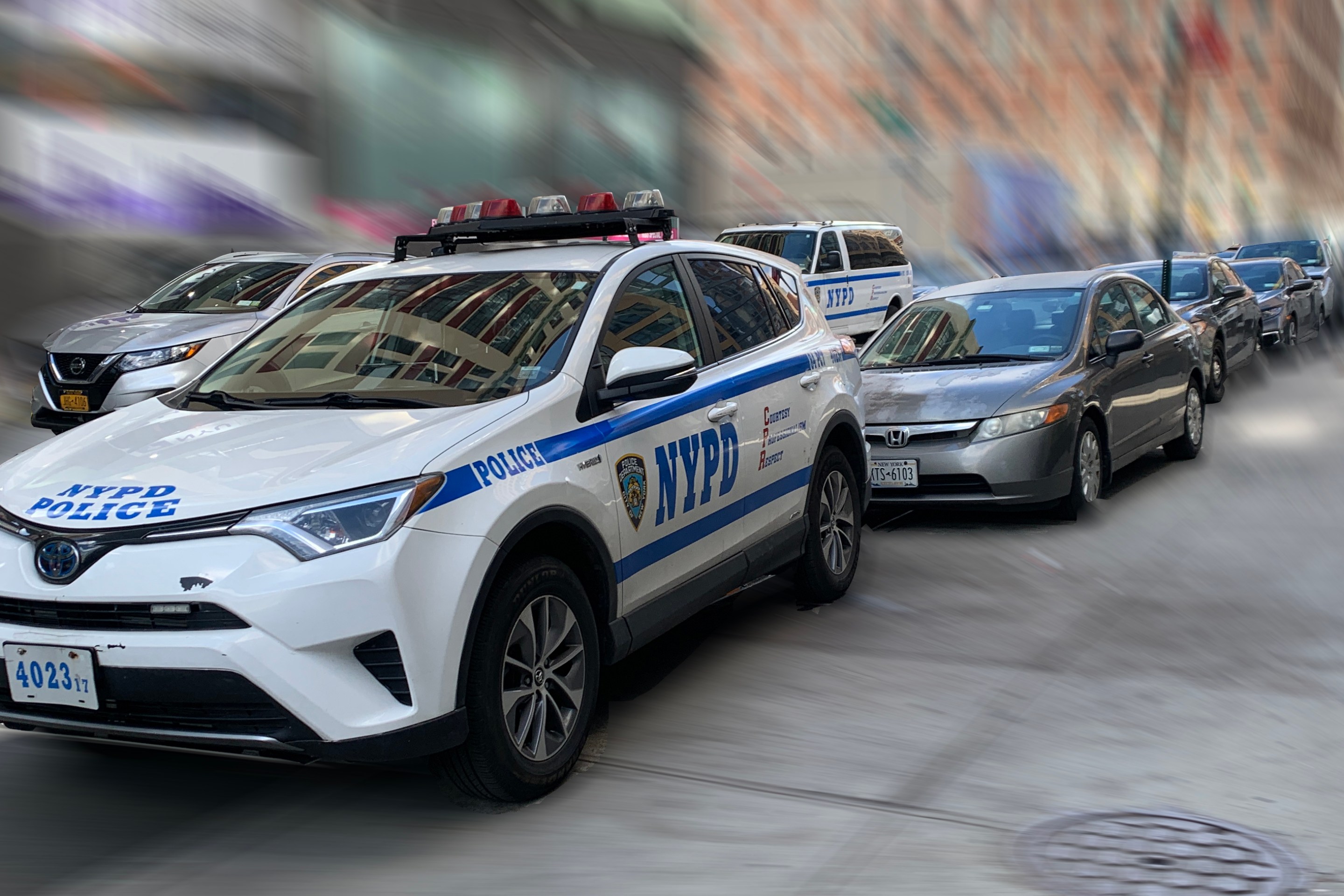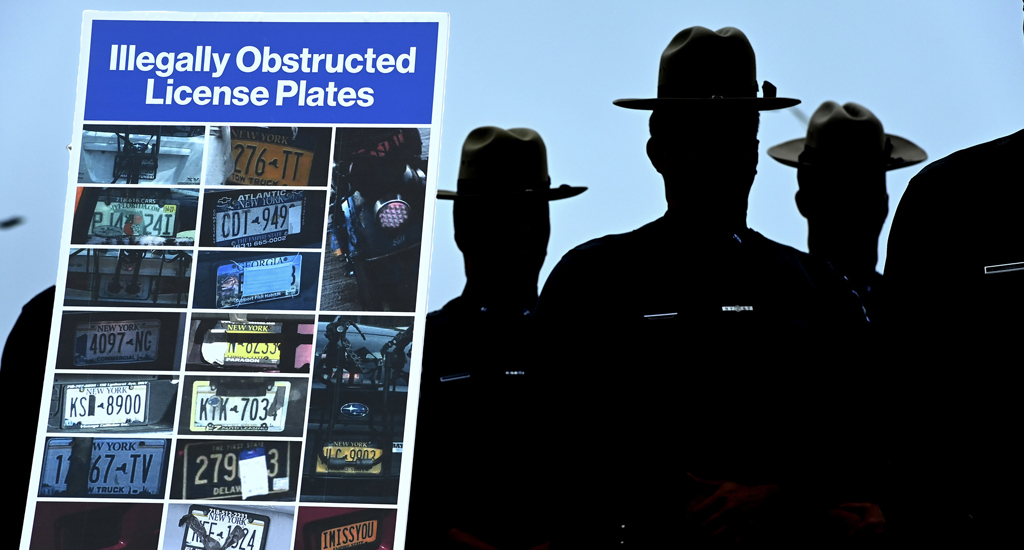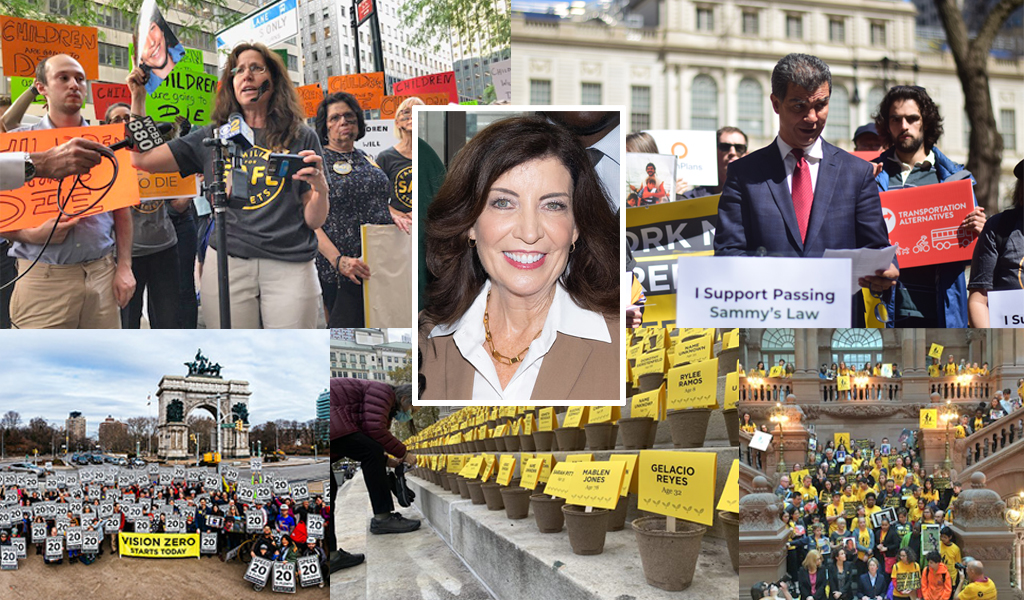Excitement at First Bike-Share Workshop, Especially for Stations in the Street
2:43 PM EST on February 1, 2012
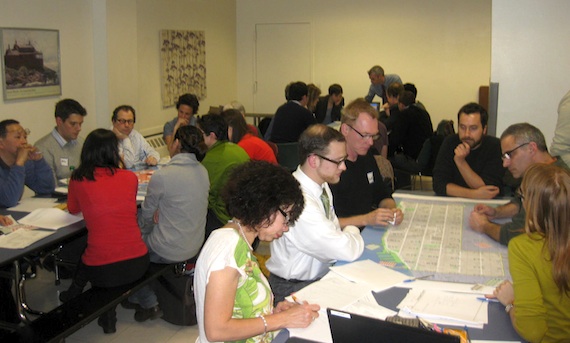
Residents of Hell's Kitchen and Chelsea packed into a room last night to discuss the more than 50 bike-share stations planned to open in their neighborhoods this summer. No one was there to complain -- this crowd was there to roll up their sleeves and get to work.
I sat in with a table of nine, where participants uniformly supported bike-share and overwhelmingly believed that the stations should go in parking spaces rather than on crowded Midtown sidewalks. With little disagreement over those broader questions, they dove right into a table-sized map of the area, picking out sites that would and wouldn't work well for stations.
The workshop, sponsored by Community Board 4, local elected officials and NYC DOT, kicked off with brief overviews from DOT staff of how bike-share works. Streetsblog has already covered most of that, but there were a few new tidbits of information. The Bronx, Queens and Staten Island will each have a small, satellite bike-share system, for example, opening a bit later than the core service area in Manhattan and Brooklyn. Annual members, who would mostly be residents, might also get to take the bikes out longer without paying a surcharge than the tourists purchasing daily or weekly passes.
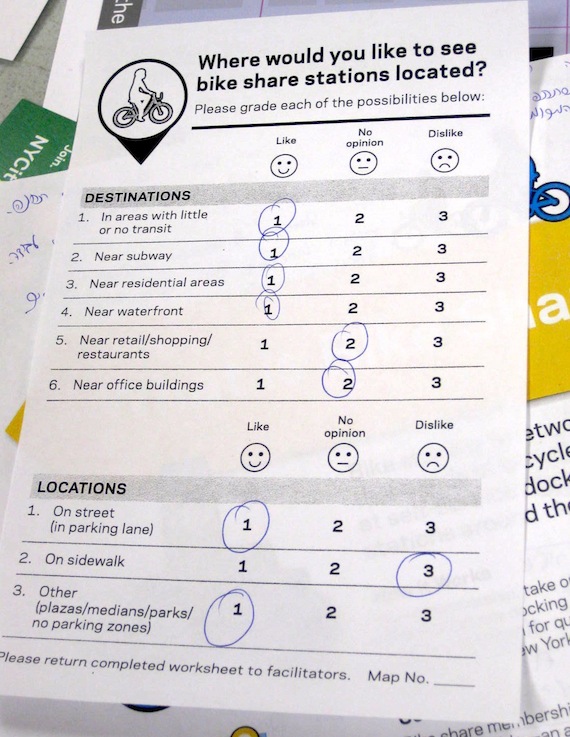
After a Q&A period, the conversation turned to station placement. Each group first discussed what kinds of trips they'd like to see bike-share used for, then whether they'd prefer the bike kiosks to be primarily located on the streets or the sidewalks, and then moved on to individual station locations.
My group was enthusiastic about a wide variety of trips -- everyone was asking questions, jotting down notes and snapping pictures with their cell phones -- but no one wanted to stations placed on the sidewalk. "It would be physically impossible to do it" given the intense pedestrian volumes in the area, said Christine Berthet, the co-founder of the Clinton/Hell's Kitchen Pedestrian Safety Coalition. Agreed a resident named Jeremy, "The sidewalks are just too tight."
While everyone could name specific locations where there was enough room on the sidewalk -- in front of a deeply set-back building or on a rarely-traveled block -- as a rule, they agreed that the bikes should go on the street. "Just as long as it doesn't take away a bike lane," joked Rick Bell, the executive director of the New York chapter of the American Institute of Architects.
When asked to formally vote on whether bike-share stations ought to go on the street in general, the group voted 8 to 1 in favor. The only dissenter, David Dartley (a Streetsblog reader and frequent commenter), said he didn't care about losing parking spaces personally, but worried about a political backlash.
CB 4 Chair Corey Johnson agreed with the siting consensus, according to Transportation Nation's Kate Hinds. “[Bike share stations] may eliminate a parking space or two on a residential block, but it’s not going to eliminate sidewalk space for pedestrians,” Johnson said.
At that point, DOT unveiled a map of the district. On display were potential station locations that had come through online submissions, the community board, business owners and BIDs, and by DOT itself. The icons were differentiated by color to note who had suggested the station and by shape to show whether the station would be on the sidewalk, street, or in another location. Each had been vetted by DOT to make sure they met the technical requirements. There were about four or five times as many options as there will be stations.
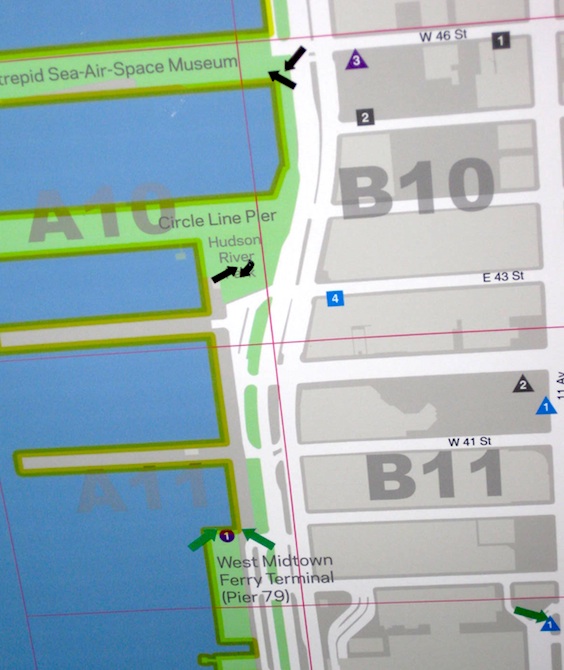
Participants got to work labeling the stations they liked with green arrows, those they didn't with red arrows, and pointing black arrows at places they'd like to add as a new suggestion. The recommendations showed off the cumulative local knowledge in the room.
One person added a black arrow at a new entrance to John Jay College, guessing that students would be heavy bike-share users. Red arrows accumulated at one intersection near the Port Authority Bus Terminal where residents said buses make particularly dangerous turns; green arrows circled the area with preferred alternatives. Only a few stations had been suggested for the Hudson River waterfront; participants strewed the riverside with new suggested locations, especially near tourist destinations like the Intrepid or Circle Line.
Workshops like this will be held in every community district where bike-share is planned. DOT will take the public input from these workshops and put it side-by-side with comments from public officials, local stakeholders, and the operational needs of the system. They'll likely come back to community boards once a draft of the station placement is available, though the exact schedule of future outreach will depend on the particular requests of each board.
Stay in touch
Sign up for our free newsletter
More from Streetsblog New York City
Tuesday’s Headlines: Valley of Political Death Edition
Did you see the new poll showing congestion pricing is really unpopular? Ignore it! Good times are coming. Plus other news in today's headlines.
Open Streets Groups Warn of Extra Red Tape to Run Events
Two weeks notice for hopscotch or a yoga class?
Monday’s Headlines: A Federal Case over Parking Edition
We're flicking our bicycle bell over a big scoop last week that no one picked up on...yet. Plus other news.
Hochul, Legislators Reach Toll Evasion Crackdown Deal
Higher fines for covering a plate and for not paying tolls are part of the budget deal inked on Saturday.
Behind the Scenes: How Gov. Hochul Got ‘Sammy’s Law’ Over the Finish Line
Opponents didn't want to put their name on a no vote for the life-saving measure.


